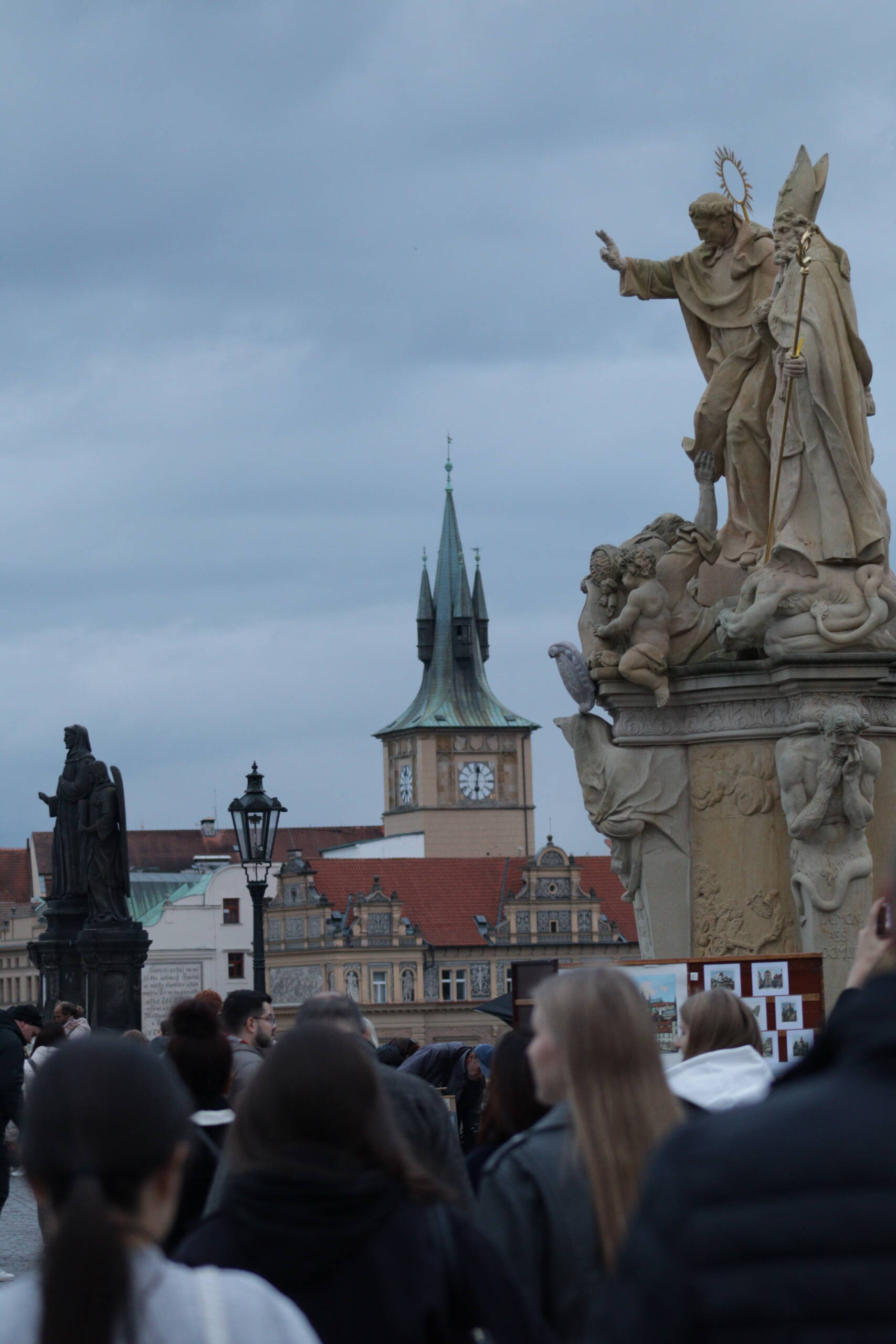Charles Bridge never allows you to cross without noticing. It’s a place where the city of Prague seems to condense into one stretch of stone, every meter packed with history, noise, art, and a slight edge of danger. The statues loom overhead, saints frozen mid-gesture, their robes swirling in stone folds, their halos gleaming faintly even under a clouded sky. One saint points outward as if commanding the crowd to move forward, another clutches a staff while cherubs cling at his feet. You notice the smallest details: a pigeon perched on the edge of the sculpture, as though it were part of the design all along, and below it the flow of people shifting like water through the centuries.

The backdrop feels cinematic. The clock tower rises sharply, its face glowing pale against the early evening. Spires with greenish copper tips stab into the grey-blue clouds. The rooftops spread red and baroque across the horizon, like a painted stage backdrop that never changes, no matter how many generations of actors walk in front of it. And then there’s the crowd, never-ending, shuffling, pausing, pushing forward. You are part of this moving organism, swept along with strangers from every corner of the world.
Street artists turn the bridge into a gallery. You pass painters selling quick watercolors of Prague’s skyline, caricaturists sketching faces in five minutes flat, musicians hunched over violins or saxophones, letting notes drift into the cold air. Sometimes, a guitarist strums melancholic chords that sound almost medieval; other times, a jazz quartet breaks the solemnity with energy that makes people stop and sway. The bridge is both museum and marketplace, a carnival of talent and hustle where art is not locked behind walls but spread openly across the stones.
But along with beauty comes the sharp edge of reality. Pickpockets weave invisibly through the throng, eyes sharper than any artist’s. Guides and signs warn you to watch your bags, and you quickly learn to hold your backpack in front, not behind. It’s part of the intensity—Prague gives you its romance, but never without a reminder that you’re vulnerable in the crowd. The bridge has always been a crossroads of power and trade, and even now it’s a place where opportunists thrive in the shadows of saints.
And yet, that slight tension only heightens the sensation of being alive here. The music, the statues, the shifting sky, the constant murmur of many languages—it all folds together into something overwhelming, something you can’t digest in a single visit. Charles Bridge doesn’t let you just observe; it makes you a participant, whether you’re buying a sketch, clutching your bag a little tighter, or simply staring at a haloed saint pointing across the city.
It’s never just peaceful, never just background. It’s an overload—sacred and profane, beauty and risk, art and commerce, centuries of history mixed with today’s human noise. That’s why crossing Charles Bridge feels intense. You don’t just see it; you live it, in all its chaotic, unforgettable fullness.
Leave a Reply